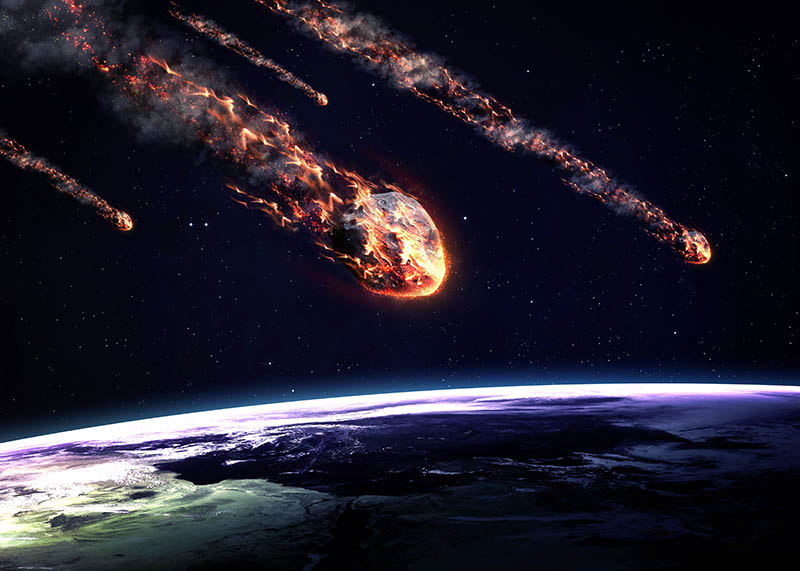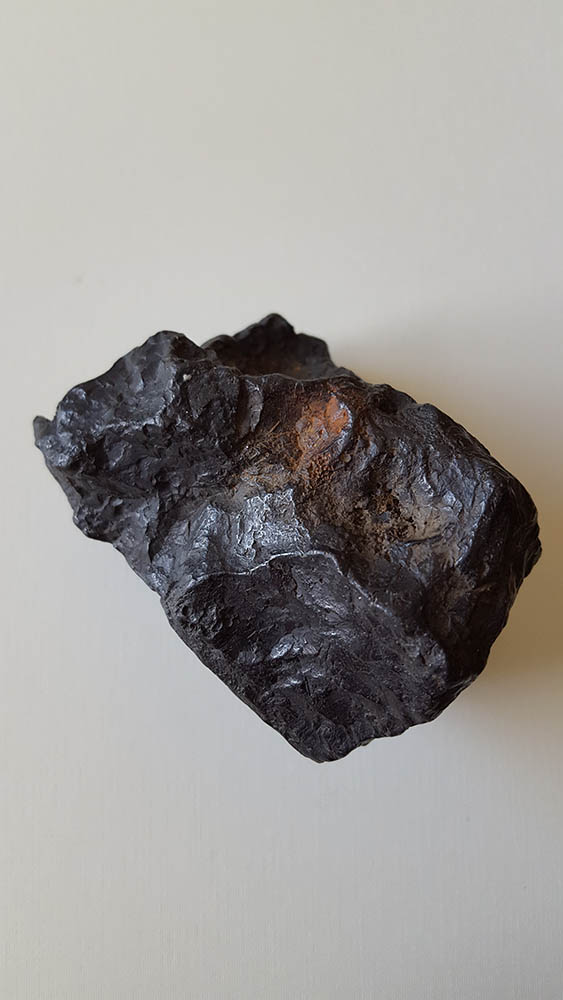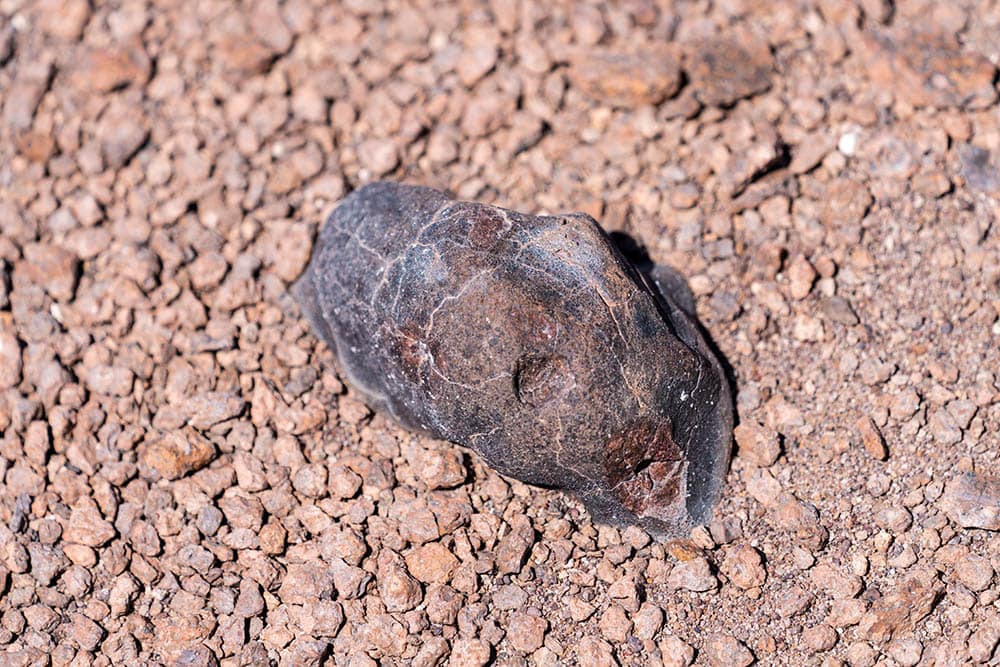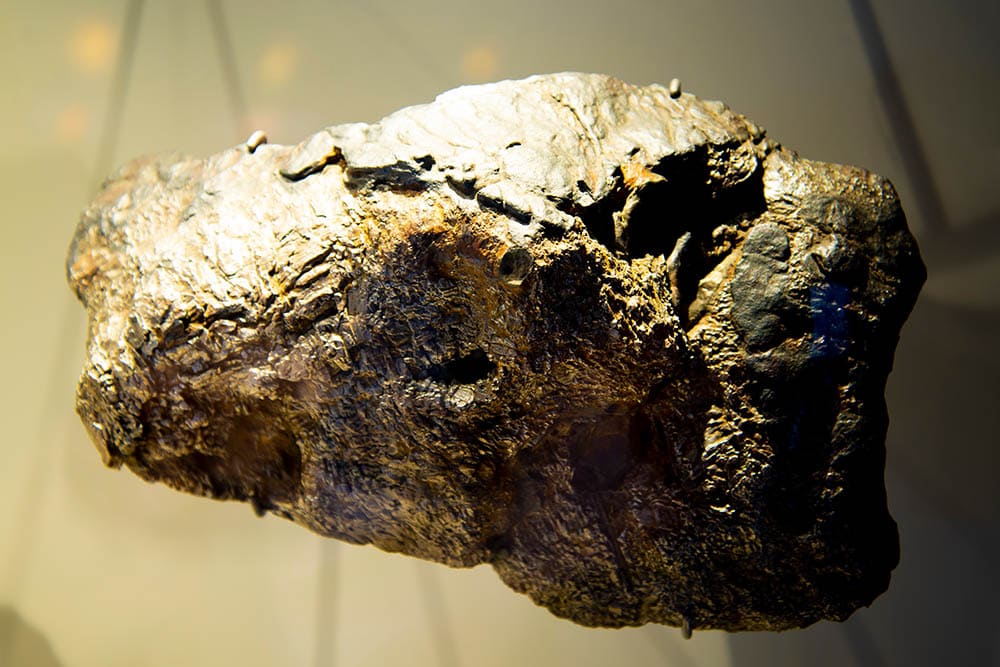What Are Meteors Made Of? What You Need to Know!
Last Updated on

Often referred to as falling stars, meteors are the streaks of light that are sometimes seen flashing across the sky. They are made when pieces of space rocks skim the Earth’s (or another planet’s) atmosphere, and they actually have nothing to do with stars at all.
Although they can be caused by chunks of ice and debris falling away from passing comets and asteroids, meteors are not caused by comets or asteroids themselves. In this article, we will tell you everything you need to know about meteors, including where and when you can see them next! Meteors are made up of fragments of comets and asteroids. Their chemical makeup can vary quite a bit. Keep reading for more…

How Are Meteors Made?
When meteoroids and other space objects enter the Earth’s atmosphere at high speeds, the friction of the falling particles against the molecules in the atmosphere and the compression of the gasses in the air cause aerodynamic heating, producing a bright streak of light across the sky, and perhaps even a fireball, as the object burns up.
Types of Meteors
Meteors are classified into types, depending on their size, brightness, and their proximity to Earth. Different chemicals give off different colors when they burn. Depending on the chemical makeup of the object that’s falling into the Earth’s atmosphere, the light that they produce may appear white, red, orange, green, blue, purple, or yellow. Additionally, the speed at which the meteor enters the atmosphere affects its color too.
While slow meteors appear red or orange, faster ones can appear blue. If the meteoroid is composed mainly of calcium, it may appear purple. When magnesium burns, it appears green, while oxygen and nitrogen appear red or orange.
Earth grazer
Earth grazers or Earth-grazing fireballs are often seen flashing low in the sky, near the horizon. They have long and colorful trails, and they bounce off the Earth’s atmosphere only to re-enter space.
When Earthgrazers break up and explode in the Earth’s atmosphere, some fragments may fall to the surface as meteorites. When this happens, the phenomenon is known as an Earth-grazing meteor procession.
Fireballs

Fireballs range from about the size of a basketball to a small car. They’re extremely bright—much brighter, and longer-lasting than Earthgrazers. They appear brighter than most of the stars in the sky, at around the same brightness as Venus in the early morning or evening. Fireballs are large enough that they can be sighted over a wide area.
Several thousand fireball meteors strike the Earth’s atmosphere every day, though most go unnoticed because they occur over vast oceans or uninhabited deserts.
Bolides

Bolides are a particular type of fireball meteor. They are as bright or even brighter than fireballs, but the difference is that bolides explode in the Earth’s atmosphere, often producing a sonic boom. The shockwave of a bolide explosion can sometimes be felt on Earth, as well as heard.
A superbolide meteor that exploded with the energy of 500 kilotons of TNT, over Chelyabinsk, Russia, in 2013 released light that was 30 times brighter than the sun. It injured more than 1,000 people and left patients with skin and retinal burns.

What Are Meteoroids?
Meteoroids are rocky or metallic space objects that range from about the size of a grain of sand, to as large as 3 feet wide. Smaller objects that enter the Earth’s atmosphere are known as micrometeoroids and space dust.
Meteoroids and micrometeoroids are usually fragments and chunks that have been left behind by comets and asteroids. Others are debris from collision impacts, thrown into space from other nearby astronomical bodies such as the Moon or Mars. It’s estimated that 48.5 tons of meteoritic material rains on our planet every day.
What Are Meteorites?
When a meteoroid survives its fall through the Earth’s (or another planet’s) atmosphere and impacts the surface, it is known as a meteorite.
A meteorite is a solid piece of space rock that probably originated from an asteroid or a comet. Bolide meteorites are large enough to create a crater. If a meteorite is sought out and found after its fall was sighted, it is called a “meteorite fall”. Space rocks found at other times are called “meteorite finds”.
What Are Meteorites Made Of?
Iron Meteorites

Iron meteorites are made up primarily of iron. The rest is a mix of nickel and other trace elements. These meteorites are very dense, and they are thought to come from the core of asteroids. Though they are rarer than stony meteorites, they’re often easier to find due to their magnetism.
Stony Meteorites

Stony Meteorites are the most common meteorites to land on Earth. Over 95% of meteorite falls are stony. They’re composed mainly of silicate, though there are often grains of iron scattered throughout.
Chondrite meteorites are named for their identifying feature—tiny, millimeter-sized spherical mineral grains called chondrules that are found in the rock. Chondrites are the most common stony meteorite.
Achondrite meteorites are mainly made up of silicates. They’re usually formed on asteroids, but some were formed on Mars and the Moon.
Stony-Iron Meteorites

As the name suggests, stony-iron meteorites are made of equal proportions of metal and silicates. They make up less than 2% of all known meteorites. There are two types of stony-iron meteorites.
Mesosiderite – these meteorites are probably formed during the collision of two asteroids. They’re made up of a mix of iron, nickel metal, and basalt.
Pallasite – known for their green silicate center, called olivine, these meteorites have a surface material that’s composed of an iron-nickel network. Scientists theorize that pallasites are formed when the olivine-rich mantle of an asteroid mixes with its metallic core.

What Are Meteor Showers?
As it orbits around the Sun, the Earth regularly passes through trails of debris that passing comets, or sometimes asteroids, have left behind. During these periods, many more meteors can be seen in the sky, sometimes burning in several vivid colors. These events are called meteor showers—beautiful events that are both awe-inspiring to witness and perfect to photograph.
Meteor showers are often named for the closest star constellation that they appear to originate from. For example, Perseids, one of the brightest annual meteor showers, appears towards the top of the Perseus star constellation. Perseids meteors are made up of tiny fragments left behind by the comet, Swift-Tuttle, which passes by our sun every 135 years.
Meteor Shower Calendar
The wonderful thing about meteor showers is that they happen every year at predictable times, so if you want to witness this event and even photograph it, you can get prepared ahead of time. Below is a list of all major meteor showers, their peaks, their origin (the star or constellation they appear near), and the comet or asteroid that they’re associated with, aka their parent body.
Although we’ve included the peaks, you should be aware that this may vary by a day or two, and meteors can be seen in increasing intensity in the days leading up to the peak, and even for a few days after.
1. Quadrantid
| Period: | December 26th to January 16th |
| Peak: | January 3-4 |
| Parent Body: | 2003 EH (asteroid) |
| Radiant: | Towards the top left of Bootes |
2. Lyrids
| Period: | April 15th to April 29th |
| Peak: | April 21-22 |
| Parent Body: | Comet Thatcher (C/1861 G1) |
| Radiant: | Vega, constellation Lyra |
3. Eta Aquariids
| Period: | April 15th to May 27th |
| Peak: | May 5-6 |
| Parent Body: | Comet Halley |
| Radiant: | Eta Aquarii, constellation Aquarius |
4. Southern Delta Aquariids
| Period: | July 18th to August 21st |
| Peak: | July 29-30 |
| Parent Body: | 96P/Machholz |
| Radiant: | 45° from constellation Aquarius |
5. Alpha Capricornids
| Period: | July 7th to August 15th |
| Peak: | July 30-31 |
| Parent Body: | 169P/NEAT |
| Radiant: | North of Alpha Capricornii, eastern Sagittarius |
6. Perseids
| Period: | July 14th to September 1st |
| Peak: | August 12-13 |
| Parent Body: | Comet Swift-Tuttle |
| Radiant: | Towards the top left of constellation Perseus |
7. Orionids
| Period: | September 26th to November 22nd |
| Peak: | October 20-21 |
| Parent Body: | Comet Halley |
| Radiant: | Just left of Orion’s “club”, constellation Orion |
8. Southern Taurids
| Period: | September 28th to December 2nd |
| Peak: | November 4-5 |
| Parent Body: | Comet Encke |
| Radiant: | Towards the right, and just above constellation Taurus |
9. Northern Taurids
| Period: | October 13th to December 2nd |
| Peak: | November 11-12 |
| Parent Body: | Comet Encke |
| Radiant: | Between constellation Taurus, and The Pleiades |
10. Leonids
| Period: | November 3rd to December 2nd |
| Peak: | November 17-18 |
| Parent Body: | Comet Tempel-Tuttle |
| Radiant: | Near the star Algieba, constellation Leo |
11. Geminids
| Period: | November 19th to December 24th |
| Peak: | December 13-14 |
| Parent Body: | 3200 Phaethon (asteroid) |
| Radiant: | Near the bright star Castor, constellation Gemini |
12. Ursids
| Period: | December 13th to December 24th |
| Peak: | December 22-23 |
| Parent Body: | Comet 8P/Tuttle |
| Radiant: | Just above constellation Ursa Minor |

Final Thoughts
Meteors are the bright lights that we see when meteoroids enter the Earth’s atmosphere. They can appear in multiple vibrant colors, and are most visible during meteor showers when the Earth travels through trails of debris left behind by passing comets and asteroids. You can prepare to view and photograph meteor showers in advance, as they happen around the same time every year!
Featured Image Credit By: Vadim Sadovski, Shutterstock
About the Author Cheryl Regan
Cheryl is a freelance content and copywriter from the United Kingdom. Her interests include hiking and amateur astronomy but focuses her writing on gardening and photography. If she isn't writing she can be found curled up with a coffee and her pet cat.
Related Articles:
What Is the Best Binocular Magnification for Hunting? Optical Features Explained
15 Crucial Facts About Ultraviolet Rays & the Sun
What Constellation Is Spica In? The Interesting Answer!
10 Interesting Leo Constellation Facts, Myths, and FAQs
15 Interesting Pegasus Constellation Facts, Myths, and FAQs
6 Interesting Sagittarius Constellation Facts, Myths, and FAQs in 2024!
What Are Constellations? Where Did They Come From?
8 Interesting Libra Constellation Facts, Myths, and FAQs
